The Beauty of a Hummingbird
Sometimes when we deliver to places, we start conversations and talk about things that make good stories. We talked with Kathy Morris at Jones Nissan, who took the photos for this article and who put us into contact with Cyndi Lawrence Routledge, who works on a couple of research projects for hummingbirds in Tennessee and Kentucky. Conversations about the things we love are the best place to start for good articles for you to read.
I’ve always loved hummingbirds. They are so delicate, yet feisty, that you can’t help but watch them. My Mother had a big flower garden in her backyard, so there were always birds, butterflies, and bees out there, just waiting to nod at you before going back to their business. It was so much fun growing up in that, and watching the wonders all around me.
Cyndi Routledge told us about her work, “I started working with hummingbirds officially in 2014 with my first government contract, but my apprenticeship started in 2009, which is how you get trained to work with hummingbirds. I am working on two different research projects. One of them is purely a migration study where I’m looking at the migration routes of hummingbirds. Specifically, we are looking at what they do when they hit the Land between the Lakes, basically what happens when the birds go north through Kentucky and Tennessee - do they actually use the LBL or do they go around, or do they cross over the lakes… “
The other study is a winter hummingbird study, “It's a collaborative effort with other researchers on the east coast to identify what birds are here, and why they are here in the winter. Most of them are western birds that come from the north and west, from the Rocky Mountains - even as far as Alaska. They can survive in the winter here because we have a milder winter, which is more like the climate to which they are accustomed. ‘They can make a livin’ here.’ We’ve had over 330 winter birds from seven species in Tennessee since the study began in the late 80s.” Routledge told us.
In order to study the birds, they must first be caught, or trapped, and banded to identify which birds are being studied. “There are two methods to trapping birds. One is using a mist net that has tiny little openings, but is prone to damaging the bird’s shoulder.” Routledge paused, and then told us her preferred method, “The other method is basically like a giant bird cage that has a feeder hanging inside it. The cage door is connected with a remote and when the bird is inside, the remote is triggered. We cup the bird in our hands, place it in a soft, cotton back and bring it to the table to be measured, identify its gender, and band it. Adult males are easy on the Ruby Throated because they have a bright red throat. For the young males and females, they look the same except for the #6 primary feather. Hummingbirds have 10 feathers, the shape of the #6 is slightly different. The reason you must identify them is that the bands for males are a little smaller than for females. Each band is gender and species specific. They must fit properly for the birds. Wings and tails, bills, and weights must all be measured. The weight tells us if they are close to migrating, because that’s when they actually start putting on fat. The birds don’t put on fat unless they are actually ready to start migrating. Birds don’t need extra weight when they fly around, so they simply avoid it.”
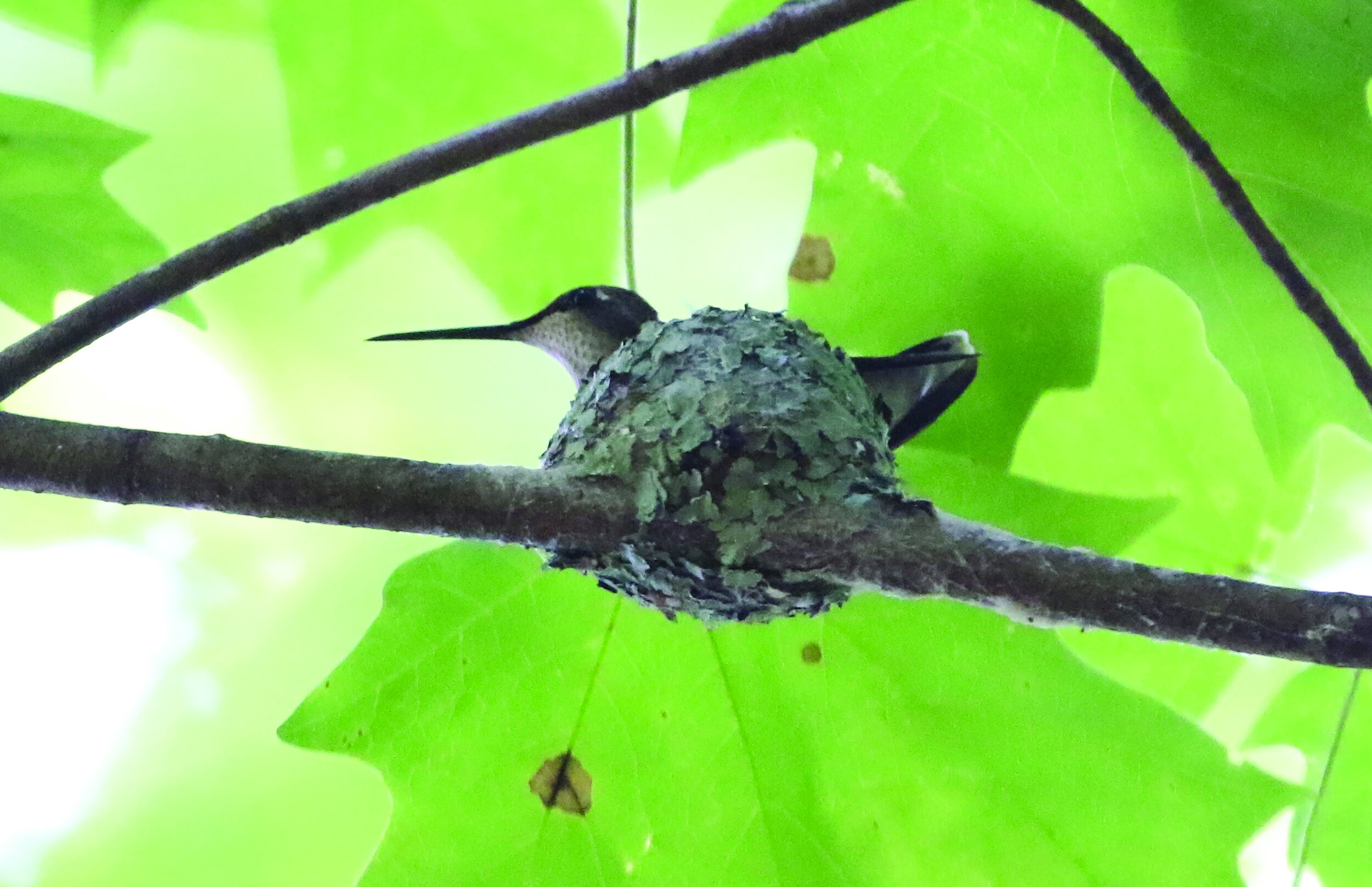
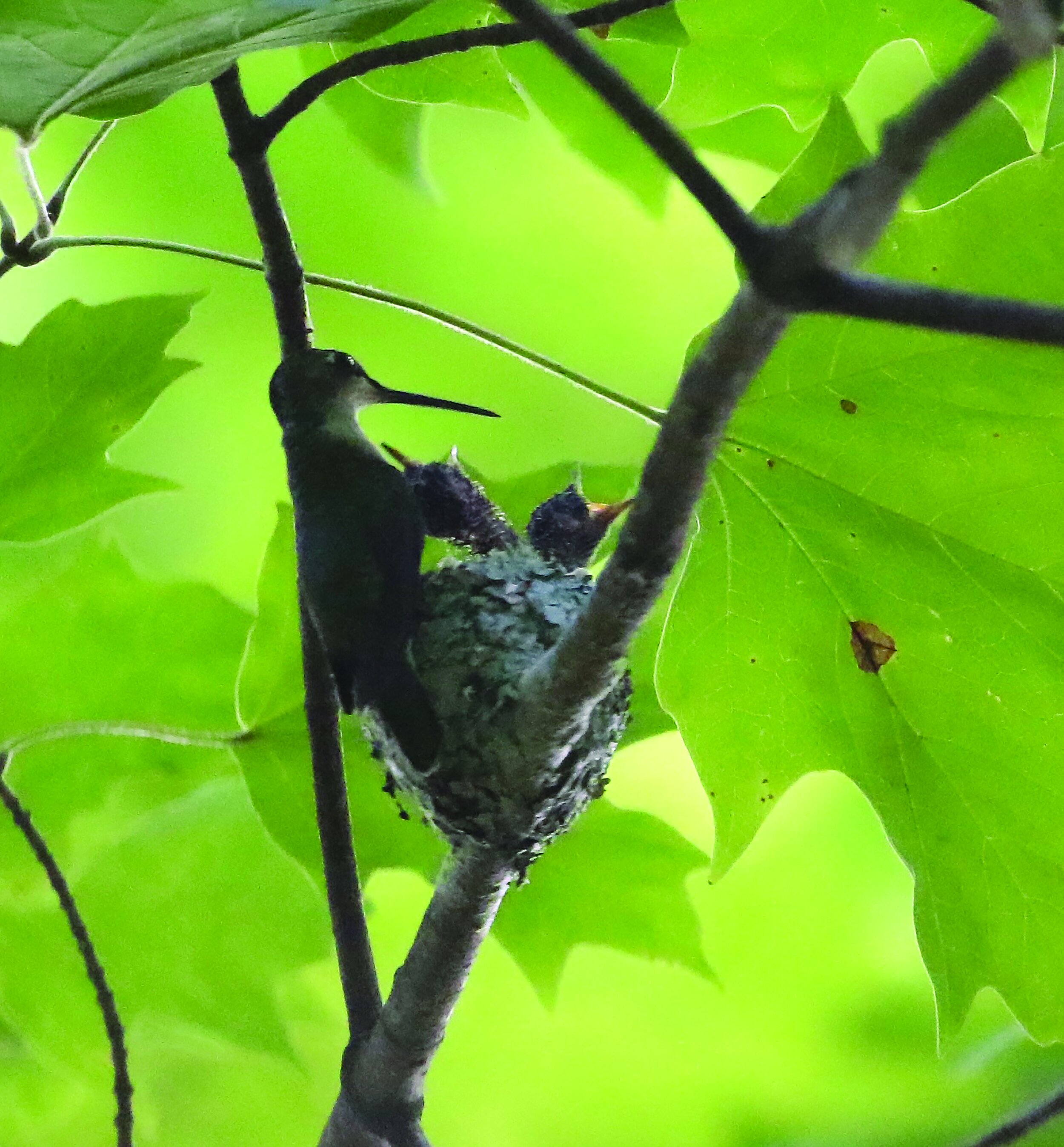
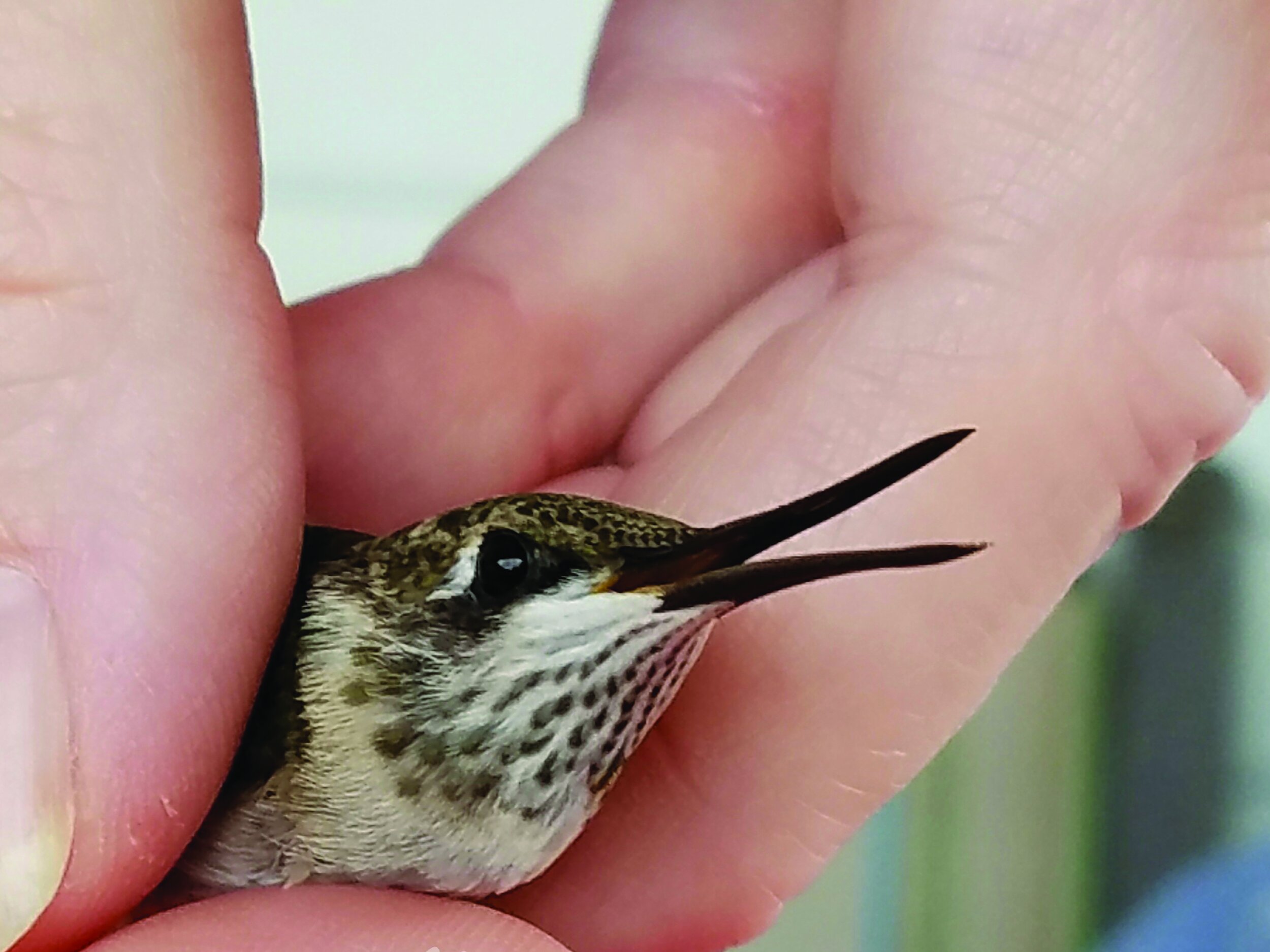


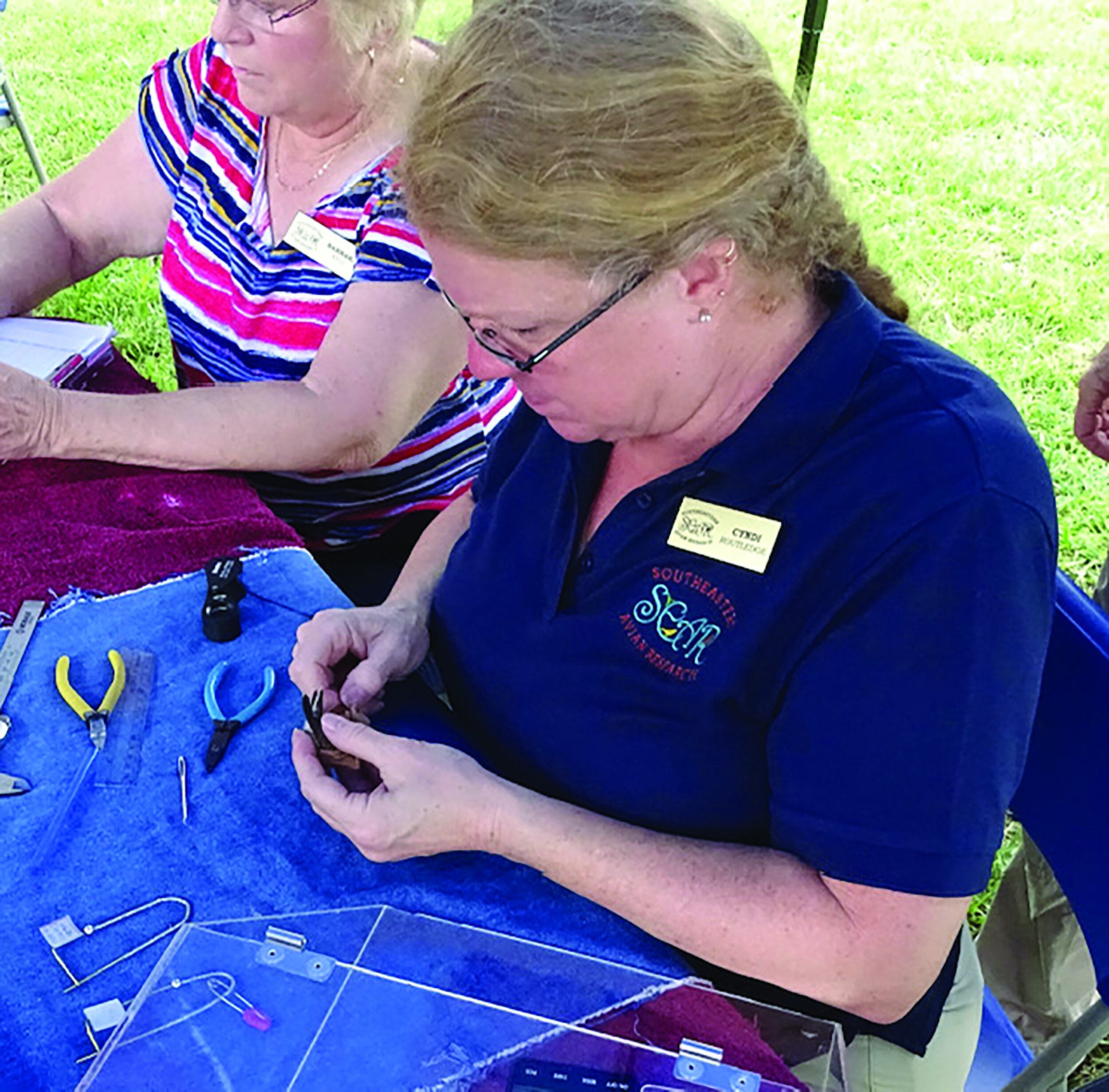

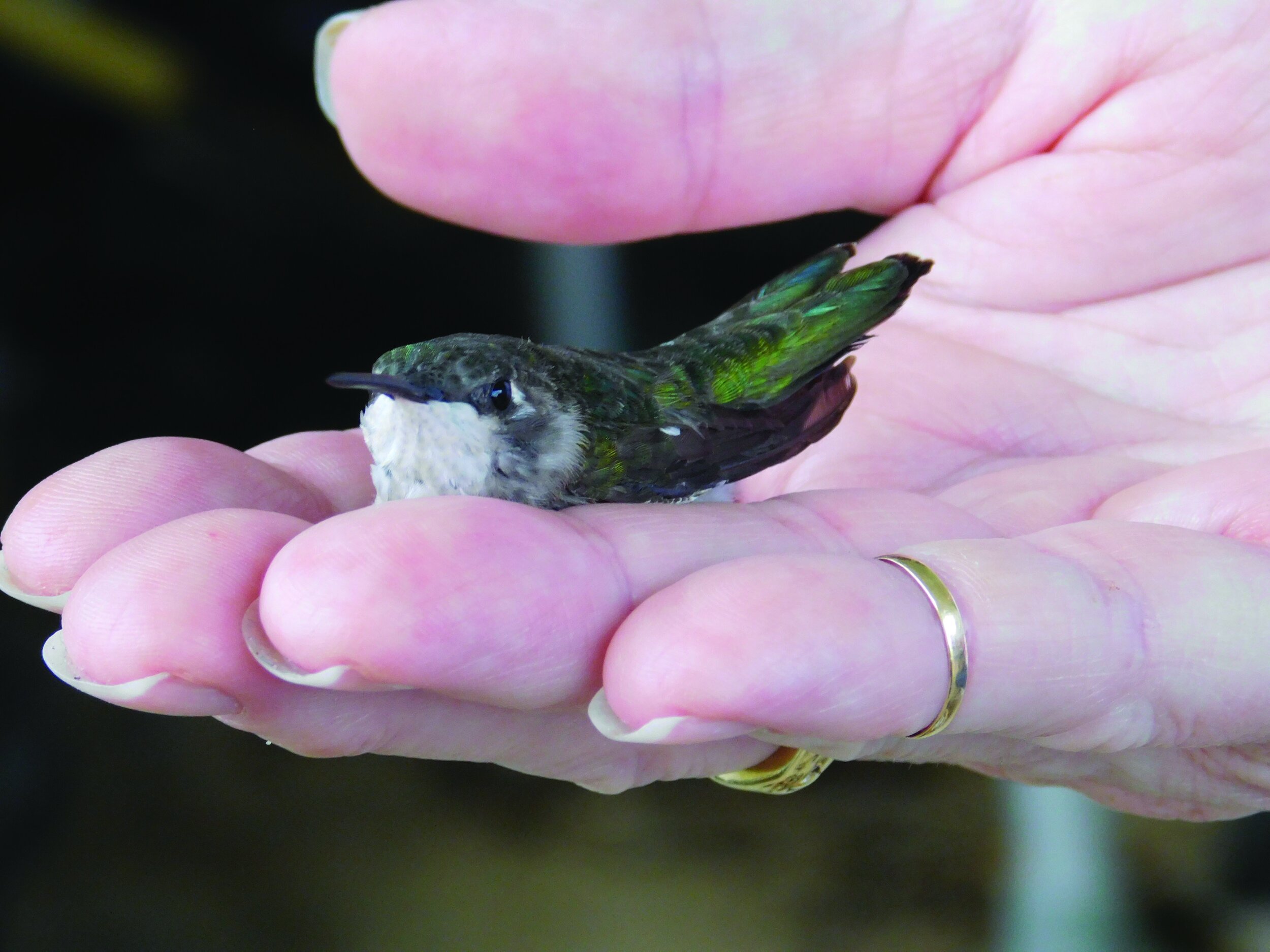
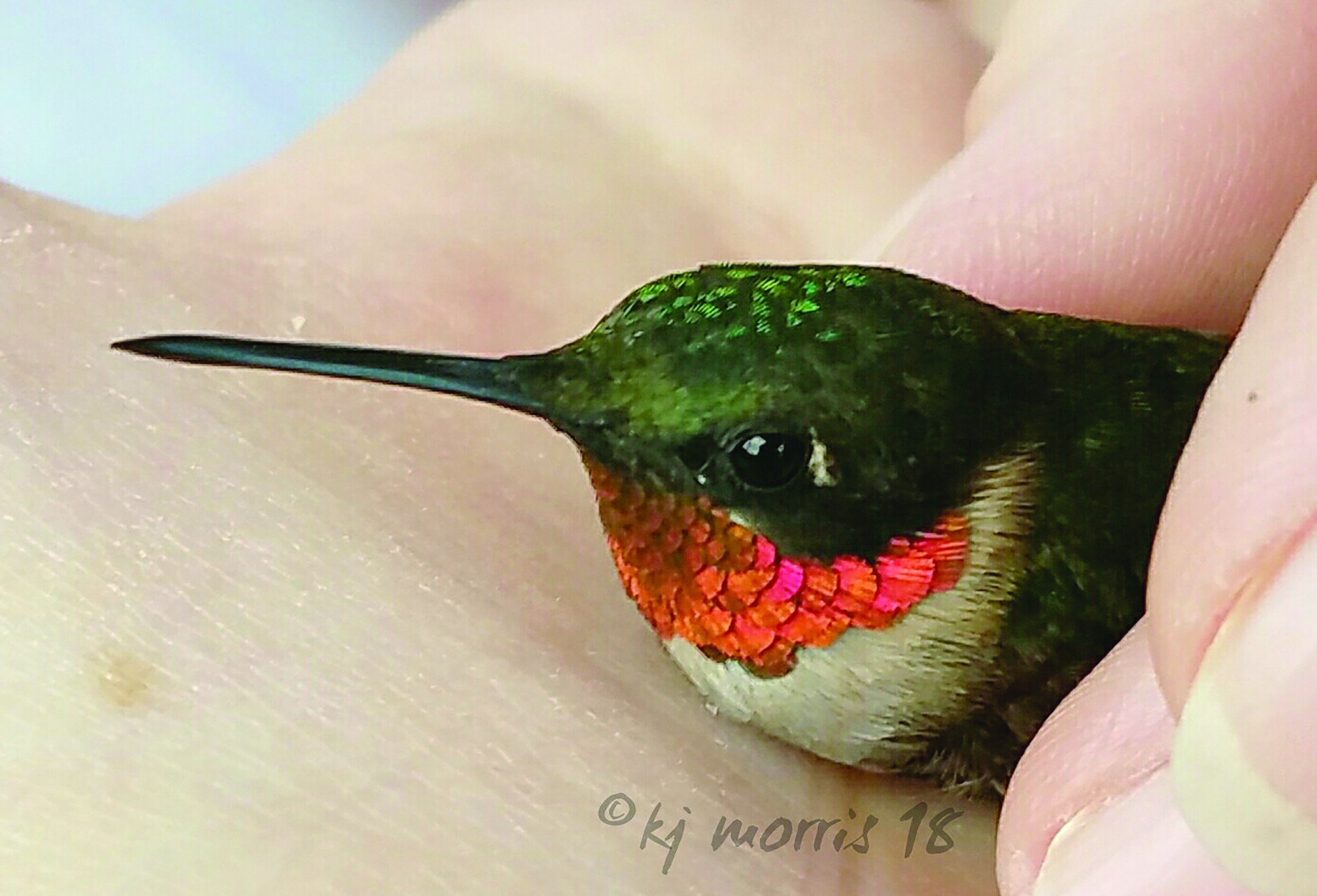
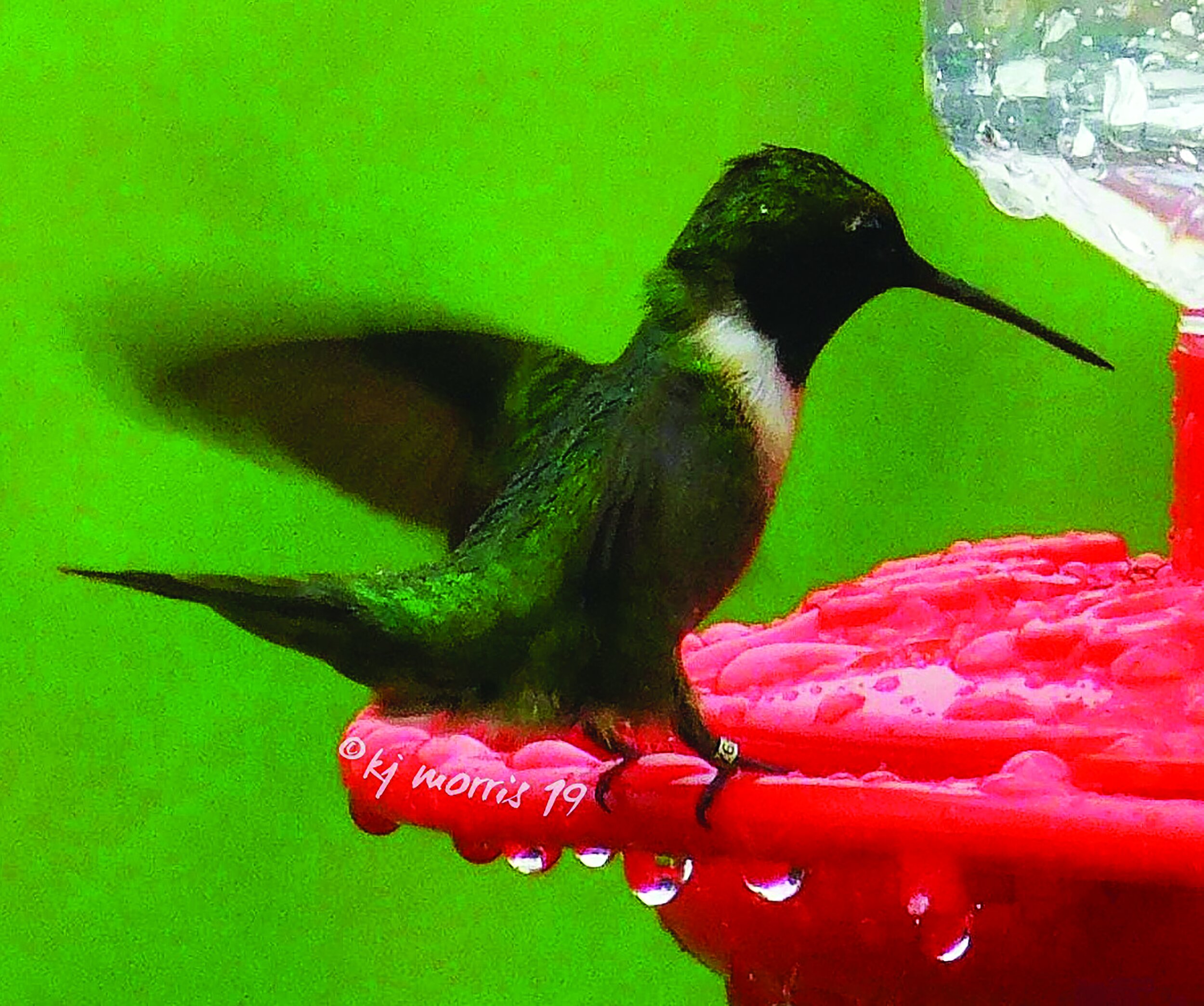

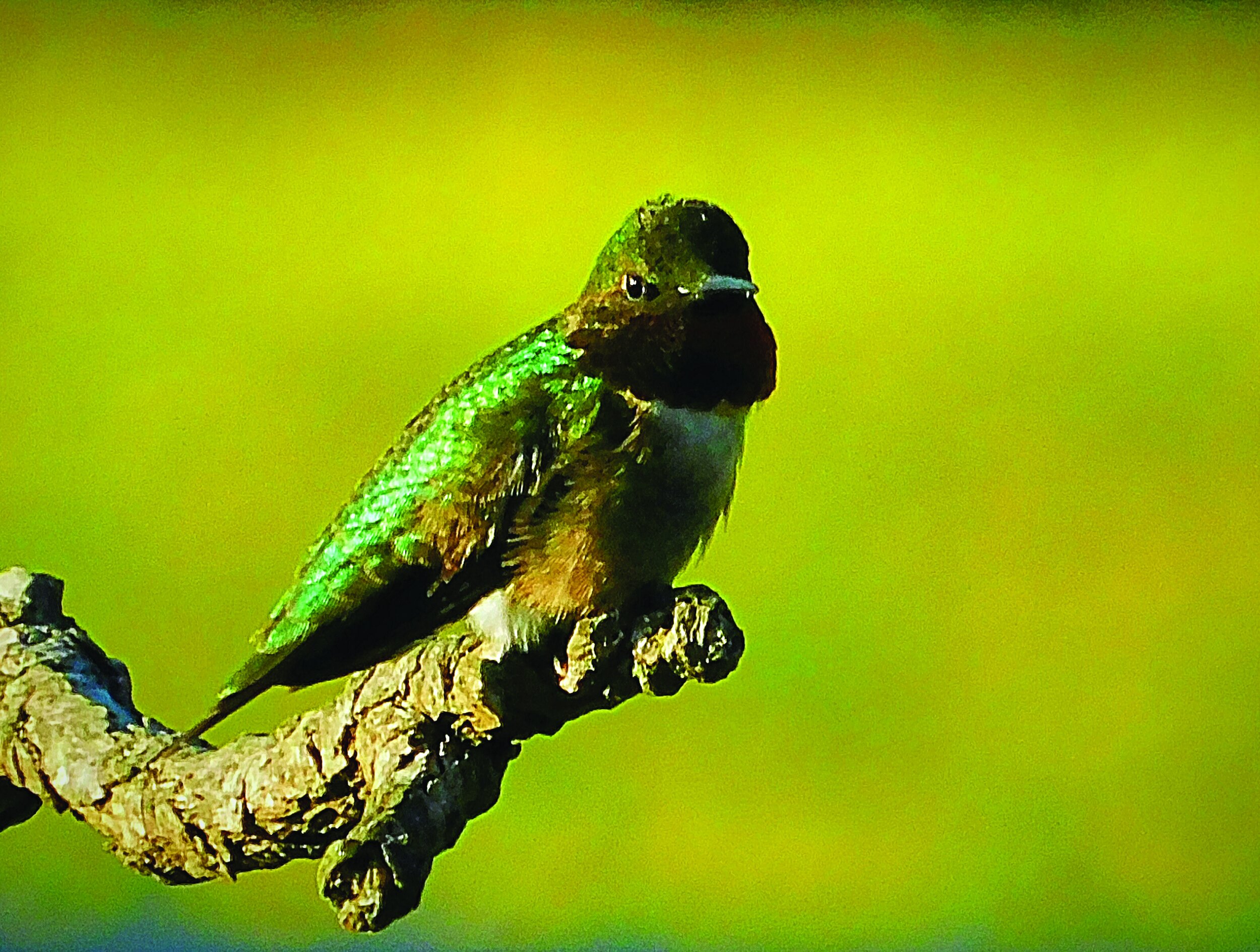
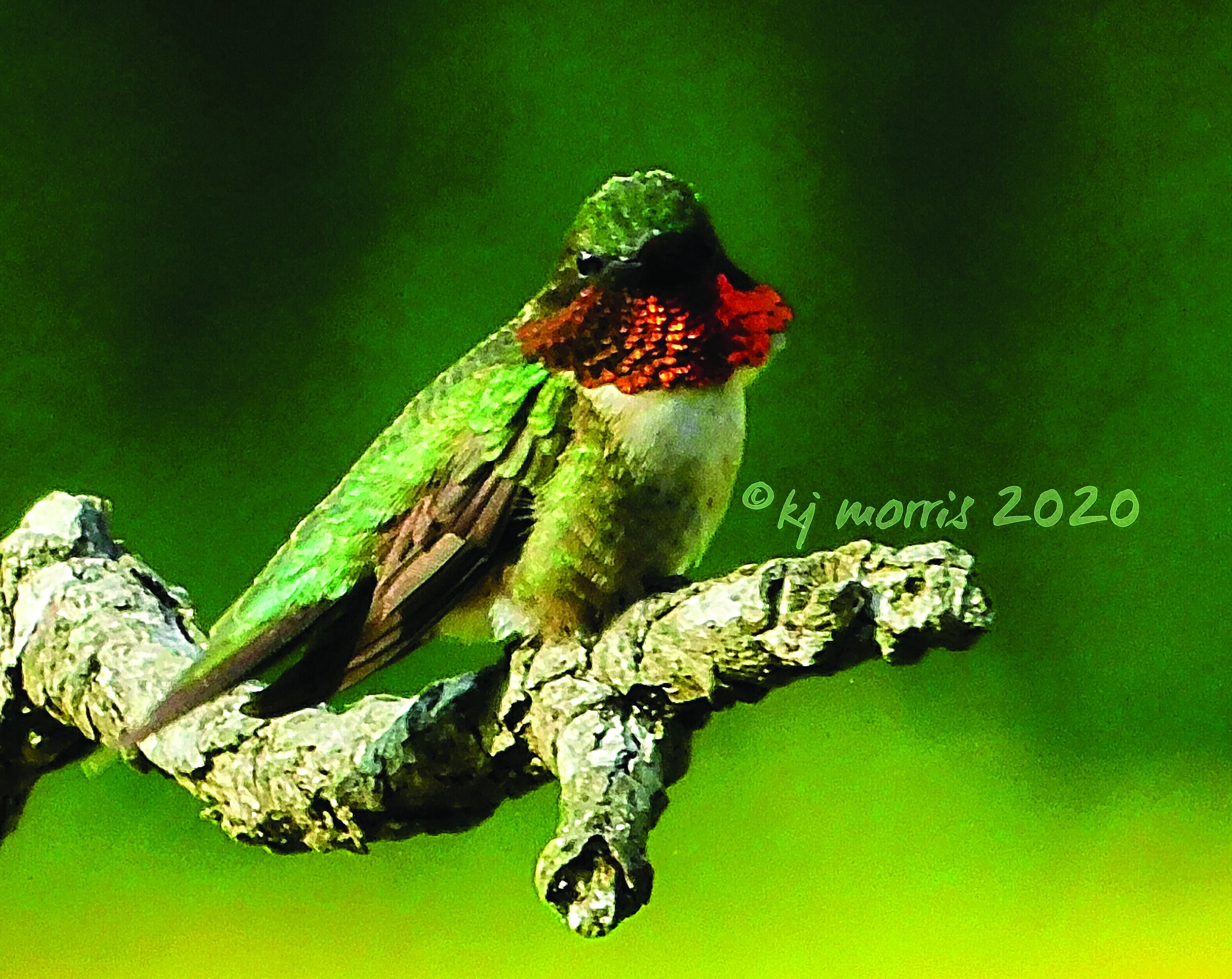
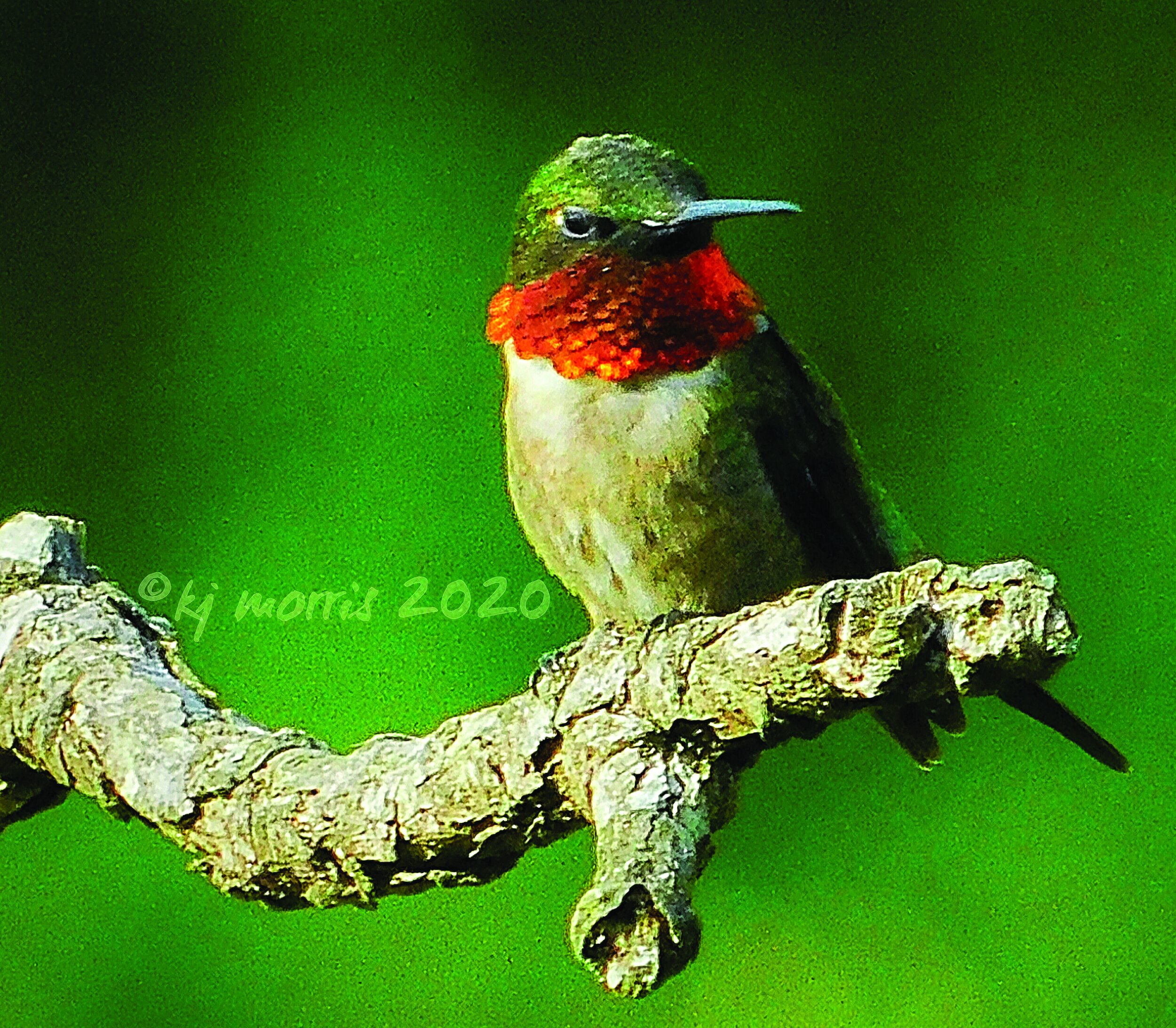
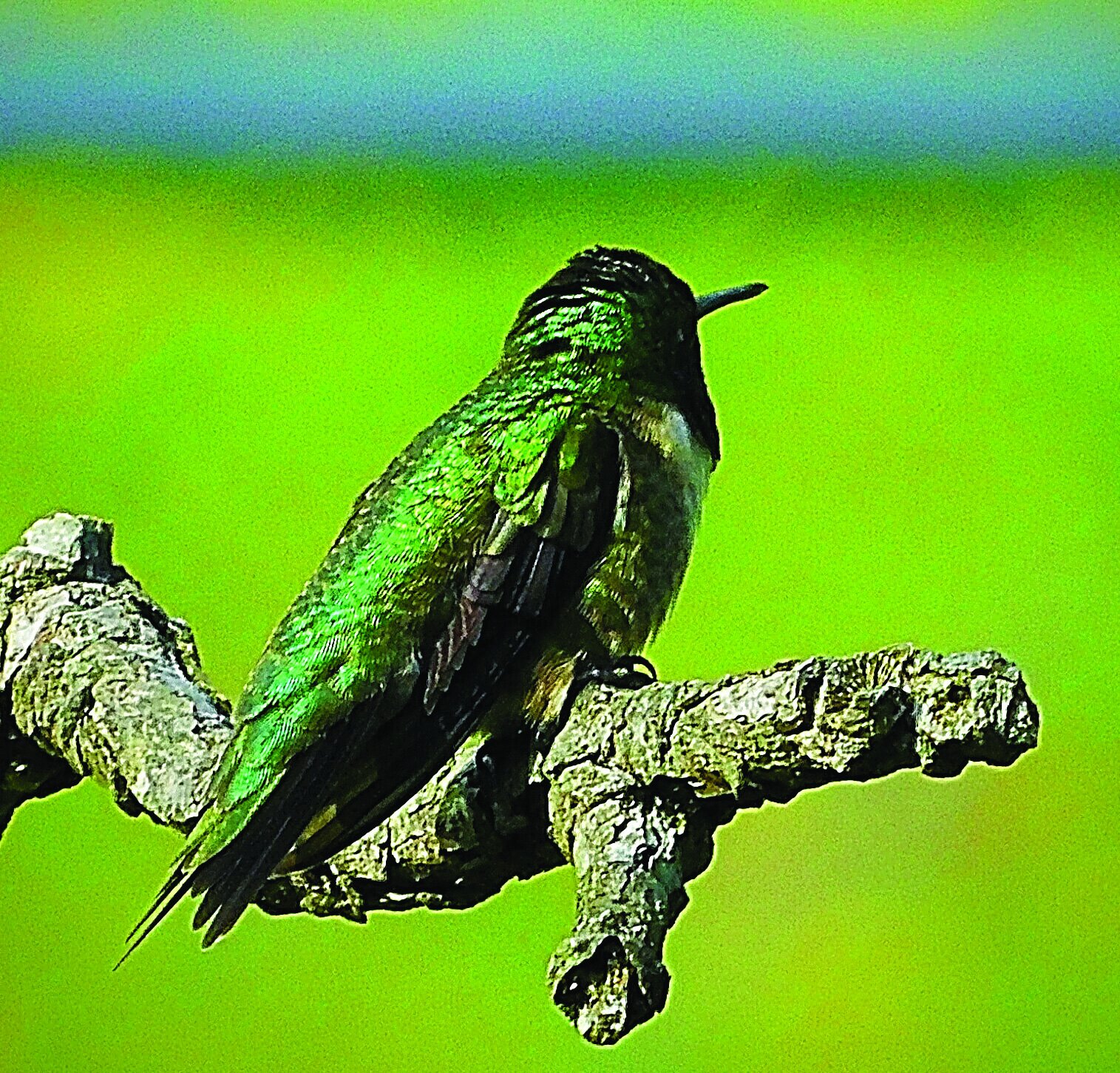
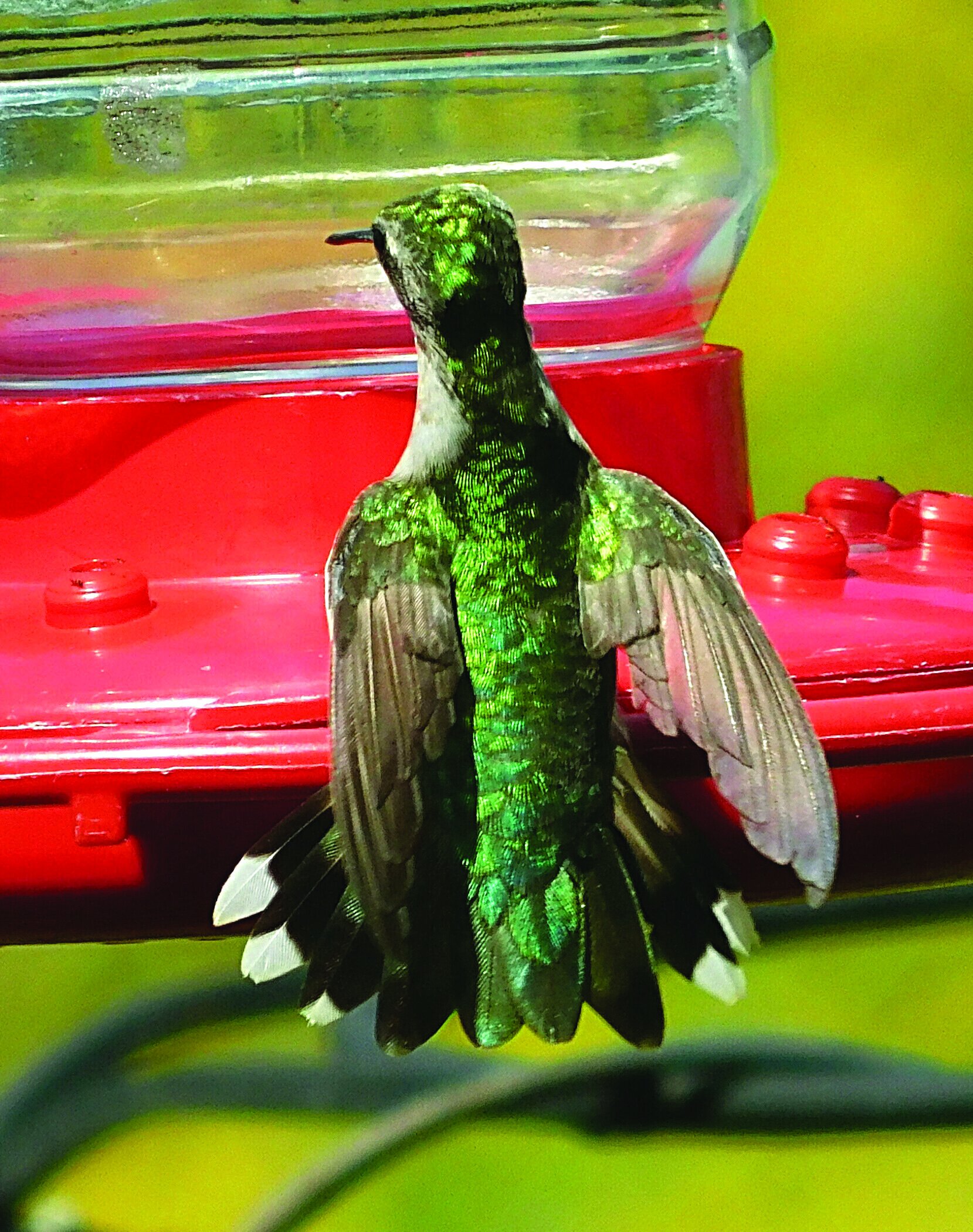
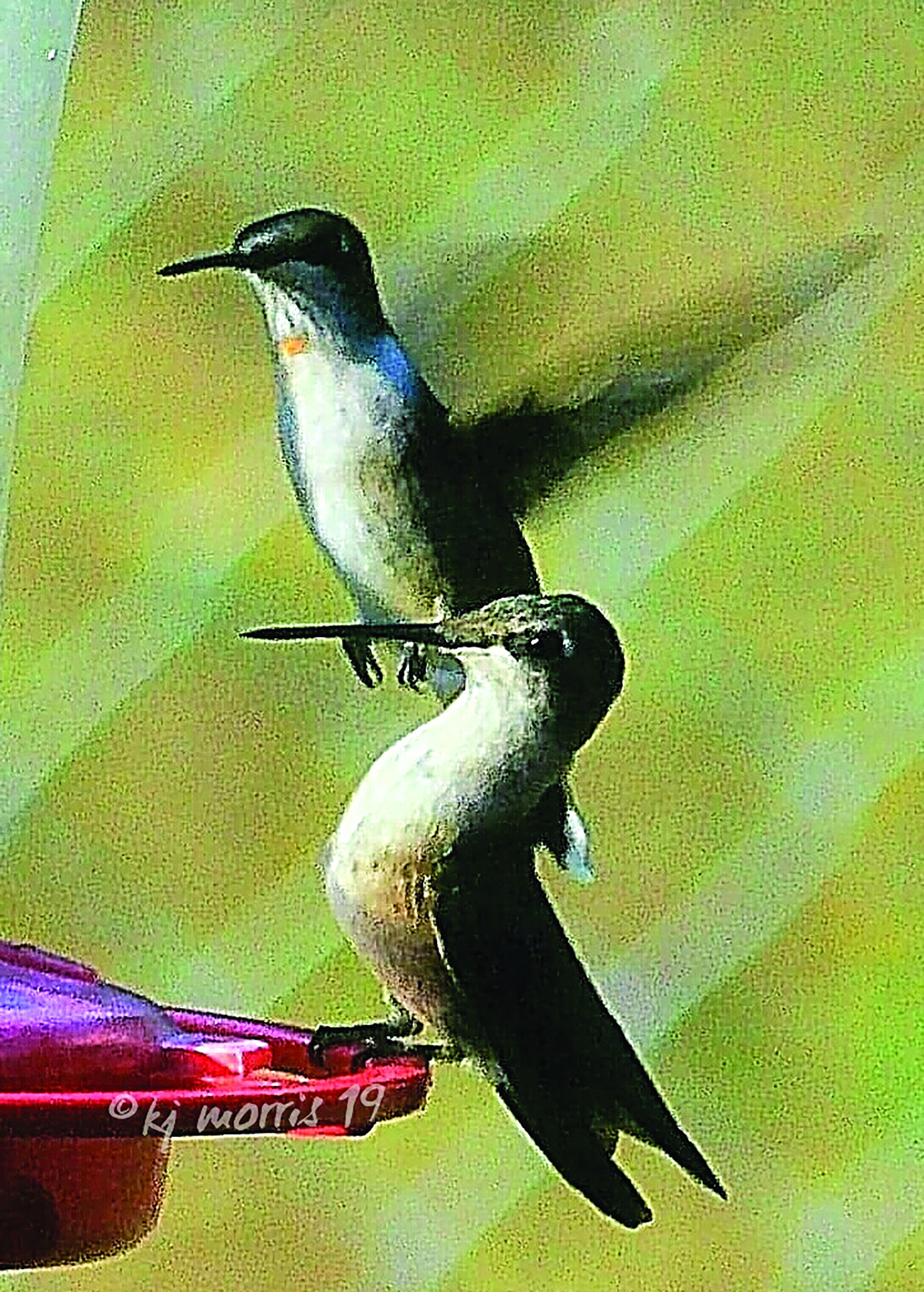
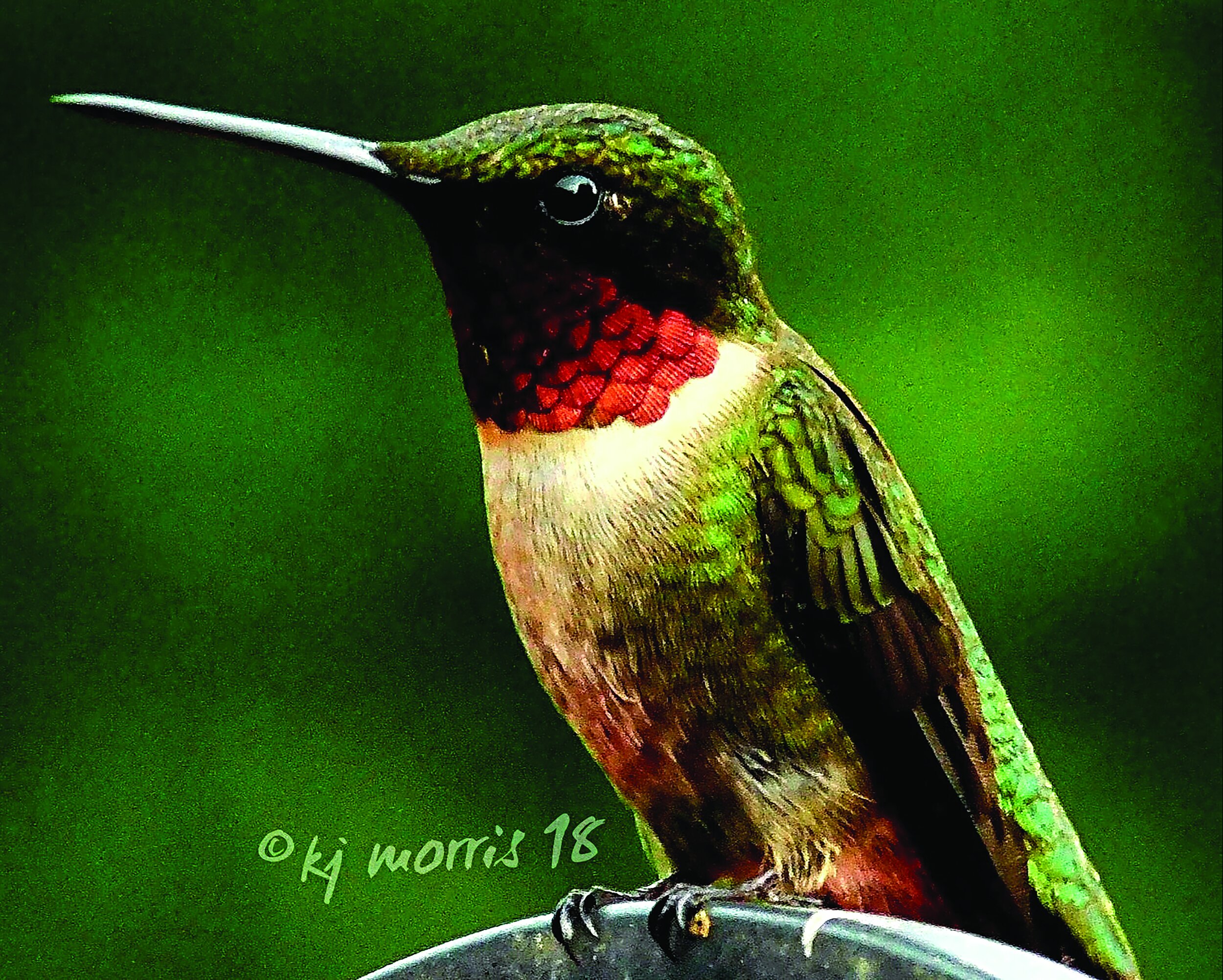
To measure the age of a hummingbird, you measure the striations in their bill. “I have this little jewelers loupe that looks to see if there are wrinkles on the bird's beak,” she continued, “if there are, then they are a very young bird. They have the wrinkles, or striations. That also means they were born this year. Adult birds, after their first birthday, lose those. That makes it easy to tell the young females from those that are over a year old.” Of course it would be the opposite of humans for birds…
There are 16 species in the US. The Ruby-throated hummingbirds, the ones we see around here the most, are doing ok. They are very adaptable but some of the Western Hummingbirds are in trouble - because of severe drought over the years. “In nature there are ebbs and flows in any species, with hummingbirds, just because you don’t see as many at your feeder doesn’t mean there are fewer hummingbirds, it just means more people are actually feeding them.” Routledge confirmed, “You may have less at your feeder, but your neighbor that just put out a feeder for the first time may be swarmed! There are more and more people feeding the birds now.”
What do you need to do to establish a Hummingbird Habitat? You need to establish a well-rounded garden for your feeders. You can place all the feeders in the world, but unless you have the flowers, and the soft bodied insects that provide 80% of their diet, that the birds need, they are going to come in for a drink and leave, not stick around and give everyone the enjoyment of watching the birds. They need all of the parts of their habitat - clean water source, bushes & trees for cover and nesting, native flowers that bloom early, again in summer, and then some that bloom in late fall. It’s all about creating that balance and a healthy habitat.
Routledge told us there are several important things to remember about feeding the birds: Number one - it’s four parts water and one part pure cane sugar. [Look at your hand and you will never forget it - four fingers for water and a thumb for sugar] Number two - always keep your bird feeder CLEAN, and never, ever, ever, feed with red dye. The birds do not process the red dye, and it can actually make them quite sick. “People think they have to have the red dye to attract the birds, but let me ask you, what color is your feeder?” she laughed, “That’s all the red you need!” She uses the ‘Humzinger’ feeder by Aspects, because it is super easy to clean, and super easy to monitor the clarity of the nectar. She also discourages metal feeders - “How would you like to put your feet on hot metal in the summer?”
The most important thing you can do, however, is keep your feeder clean! “The feeders can get black mold in them if they aren’t kept clean, and that can and will kill hummingbirds. Do not buy crazy things out there - like the nectar extenders, electrolytes… We feed these birds for our pleasure, but if we took up all the feeders in the whole world, the birds would still be fine. We feed them because we love them, we love watching them, and laughing at their antics, that being said, we have a responsibility to make things right for them.” She also reminded us, hummingbirds have dealt with bees and wasps forever, they can do it by themselves. “Just let the hummingbirds deal with them!” Routledge concluded.

